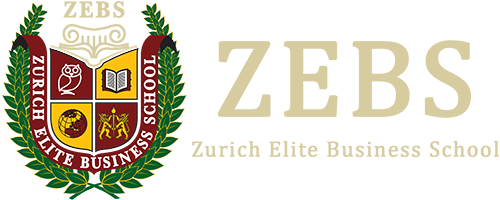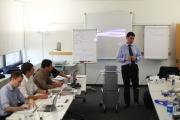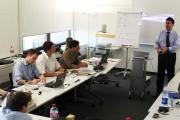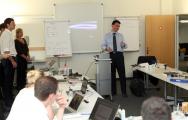Advanced Corporate Finance
Due to recent major corporate events such as the IPO of Facebook, activity in the private equity market and the everlasting importance of financial issues, the Zurich Elite Business School decided to organize a follow-up on its introductory course on corporate finance from November 2011.
The lecturer started the first day with a short wrap-up of the most important information required for each task in corporate finance: balance sheet, income statement and cash flow statement. After this, the course hit its first main focus: financial ratios and their analysis. Based on the aforementioned statements, an employee in the field of corporate finance can resort to a great variety of ratios – referring to short-term liquidity, long-term capital structure, asset utilization, profitability and market valuation – in order to get a deeper understanding of what is going on in a company.
After the theory on financial ratios was introduced, students had to deal with a case study on the American donut manufacturer Krispy Kreme Donuts and the question whether the company was financially healthy. At first glance, it had followed an impressive growth trajectory in recent years, but thanks to a thorough financial ratios analysis, it could be concluded that the company had indeed run into financial troubles which were rightfully penalized by the market.
The second and third day of the seminar put their emphasis on practical applications of the discounted cash flow (DCF) valuation and related issues such as the concepts of WACC (weighted average cost of capital) and CAPM (capital asset pricing model). These concepts sooner or later occur in almost every major corporate event – be it an IPO, a merger, an acquisition or a multi-billion development project. The DCF has two questions to answer: 1) How to come up with a coherent and sensible methodology to forecast future cash flows? 2) What discount rate should be used in order to calculate the present value of those cash flows?
With respect to the first question, students were given the case of Boeing’s 7E7 airplane development project and were asked to take a deep-dive on how exactly cash flows were calculated and how those reacted to changes in assumptions. Concerning the second question, the lecturer challenged the students to increase their awareness towards all the intricacies of choosing an appropriate discount rate (the so-called cost of capital): finding the market value of a company’s debt, choosing the appropriate cost of debt based on possible hundreds of bonds a company has issued, “un-levering and re-levering the company’s beta” in order for it to meet the financial structure of a project but to name a few.
The course finished with an encompassing case study on the U.S. bearing manufacturer Timken who was thinking of acquiring a company. Students were asked to understand the overall industry background, analyze financial ratios, explain the methodology used for evaluating the potential acquisition target, drill down on the sensitivity of the results with respect to assumptions. Furthermore, the lecturer encouraged students to make suggestions and comments on an all-debt financing of the acquisition and finally to get an insight into the trade-off between a purely financial and a strategic judgment of the situation.
Felix - IMP student






